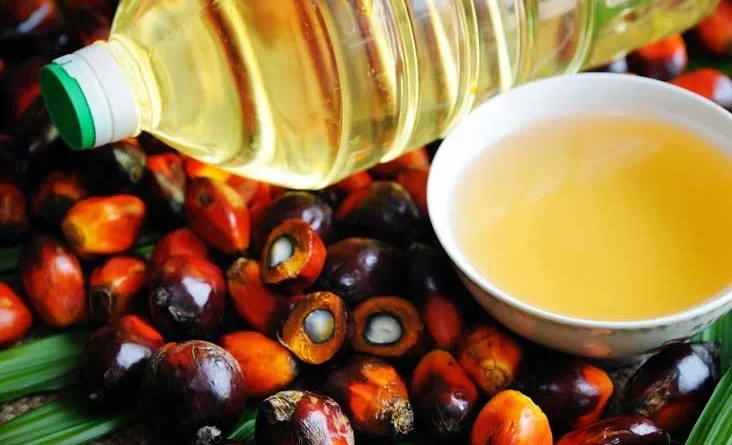Plans to cover area larger than Sikkim with palm oil plantations
By Jayashree Nandi
The Union government plans to cover an area larger than the entire state of Sikkim with palm oil plantations in six northeastern states as part of a national mission that could mean devastating consequences for the biodiversity of the region.
Special provisions are also being made to promote palm oil in northeast India keeping in mind the need for investment, the ministry of agriculture and farmers’ welfare said in response to an RTI application from Hindustan Times.
“Government has launched a national mission on edible oils (palm oil) (NMEO-OP) in 2021-22 with an objective to enhance edible oil production through area expansion and crude palm oil (CPO) production of oil palm and to reduce import burden on edible oils,” the ministry said. In the northeastern states, three companies, Patanjali Foods Private Limited; Godrej Agrovet Ltd and 3F Oil Palm are involved in palm oil processing, plantation and procurement, the response to the RTI added.
NMEO-OP is being implemented in 15 states in the country including six northeastern states, Arunachal Pradesh, Assam, Manipur, Mizoram, Nagaland and Tripura. HT reported on August 29 that Meghalaya plans to stay away from raising palm oil plantations in the state, citing their impact on biodiversity and opposition by farmers.
As per re-assessment of potential areas for oil palm cultivation in India by the Union government, a total area of 840,344 hectares or ha (8403.44 sqkm), larger than the total area of Sikkim, was found suitable and recommended for oil palm plantation in the northeastern states. The plantation area includes 133811 ha in Arunachal Pradesh i, 375428 ha in Assam , 66652 ha in Manipur , 51297 ha in Nagaland , 66792 ha in Mizoram , and 146364 ha in Tripura .
Palm oil plantations have had devastating consequences for the biodiversity in parts of Indonesia and Malaysia. Many vast monocrop oil palm plantations have displaced tropical forests across Asia, Latin America and West Africa. Around 90% of the world’s oil palm trees are grown on a few islands in Malaysia and Indonesia – islands with the most biodiverse tropical forests found on Earth. In these places, there is a direct relationship between the growth of oil palm estates and deforestation, according to the World Wide Fund for Nature (WWF).
“Palm oil is a water intensive crop so if it replaces another monoculture with higher water demand like irrigated rice or sugarcane it’s okay but not biodiversity rich forested sites,” Jagdish Krishnaswamy, dean of School of Environment and Sustainability at Indian Institute for Human Settlements, Bengaluru, said in August.
“Palm oil has historically produced dire circumstances for regions in terms of monocropping, water guzzling tendencies, human- animal conflicts, and soil health deprivation, and has had a record of turning land into biological deserts. We have studied its socio- ecological cost as compared to economic outcomes in Mizoram, Assam, etc., and we have decided against it,” James K Sangma, National People’s Party leader in Meghalaya and chairman of the Meghalaya Industries Development Corporation said, also in August.
Oil palm plantations in Mizoram had the lowest forest bird species richness (10 species), followed by teak plantations (38), according to a paper published in Ornithological Applications journal by TR Shankar Raman and Jaydev Mandal, which was published in May 2016. Forest bird abundance in the jhum cultivation landscape was similar to that in a rainforest, on average 304% higher than in oil palm plantations, the study also found. Jhum cultivation is a traditional farming method that involves clearing land of trees and other vegetation, burning it and then cultivating it for a set period of time.
HT reached out to Patanjali Foods Private Limited, Godrej Agrovet Ltd and 3F Oil Palm seeking responses on how large-scale palm oil cultivation in the northeastern and other states will impact the groundwater table, local biodiversity, and whether there has been an assessment of the environmental impact at all.

“In India, Oil Palm is generally grown in agricultural lands (ROI & NER)/ jhummed lands (NER) as against other countries wherein it is grown by clearing the forest lands. Hence the Oil Palm cultivation in India doesn’t affect the biodiversity. The present policy of oil palm development programme in India is to promote oil palm cultivation purely in agricultural lands, either replacing low value crop with high value crop like oil palm or in the land newly brought under irrigation for raising garden land crops. The suitable areas are identified by considering the present land use and avoiding the areas of existing forests. Standing crops like oil palm could serve as net accumulators of carbon, thereby offsetting carbon emissions arising mainly from fossil fuel consumption. An oil palm plantation can “sequester” up to 15 tonnes of carbon dioxide from the atmosphere for each hectare planted, thus contributing to mitigate the greenhouse effect like a planted forest,” said K Suresh, director, Indian Council of Agricultural Research – Indian Institute of Oil Palm Research (ICAR-IIOPR), in a statement. “Palm oil has been used for human consumption for thousands of years. The liquid fraction of palm oil is used world-wide for edible purposes mainly in the form of cooking oil, shortenings, margarines, blending with other oil, and in the manufacturing of several food products. Palm oil is free of cholesterol like other vegetable oils.,” he added.
“In Southeast Asia palm oil plantations are being done in large estates but for India 100% implementation is by small farm holders. Companies cannot buy or lease land This is the basic architecture of palm oil mission in India. It is the responsibility of the farmer and the company which is laid down in the MoU. The government is the regulator and the farmer will get an incentive of around ₹1.6 to 1.7 lakh per hectare for the first three to four years. This is given because in the first years, the farmer doesn’t get any income from the crop. The company will bring seeds from outside and give farmers saplings that are ready to plant. We supply fertilizers and help with drip irrigation if needed for the first few years so that the crop comes to the yielding stage. Whatever farmer produces has to be bought by the company as per government regulated price. These are highly perishable fruits which need to be processed immediately,” explained Sougata Niyogi, CEO, -Oil Palm Plantation Business, Godrej Agrovet Limited. Patanjali Foods Private Limited and 3F Oil Palm did not respond to HT’s queries.
This article has been republished from The Hindustan Times

